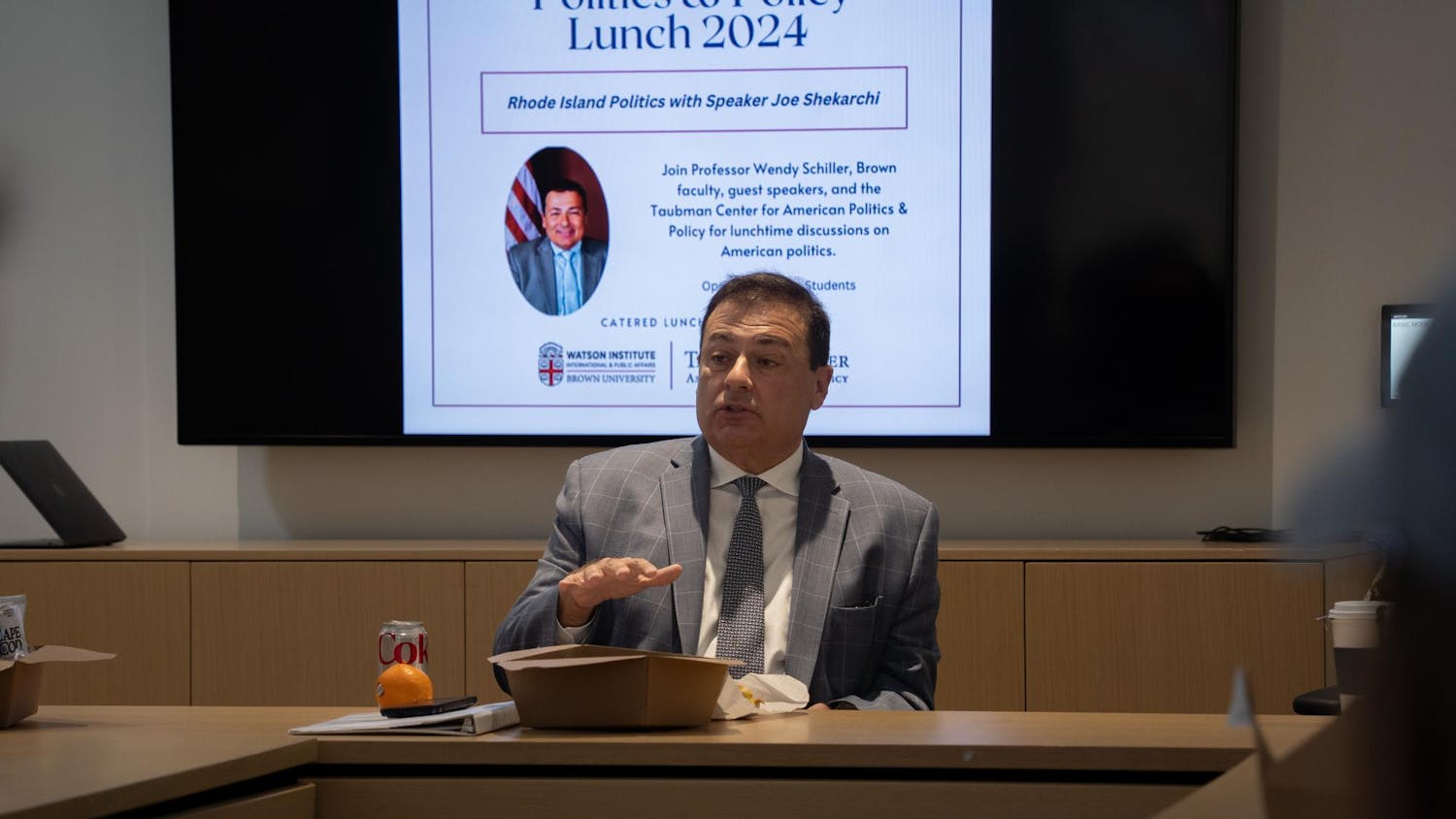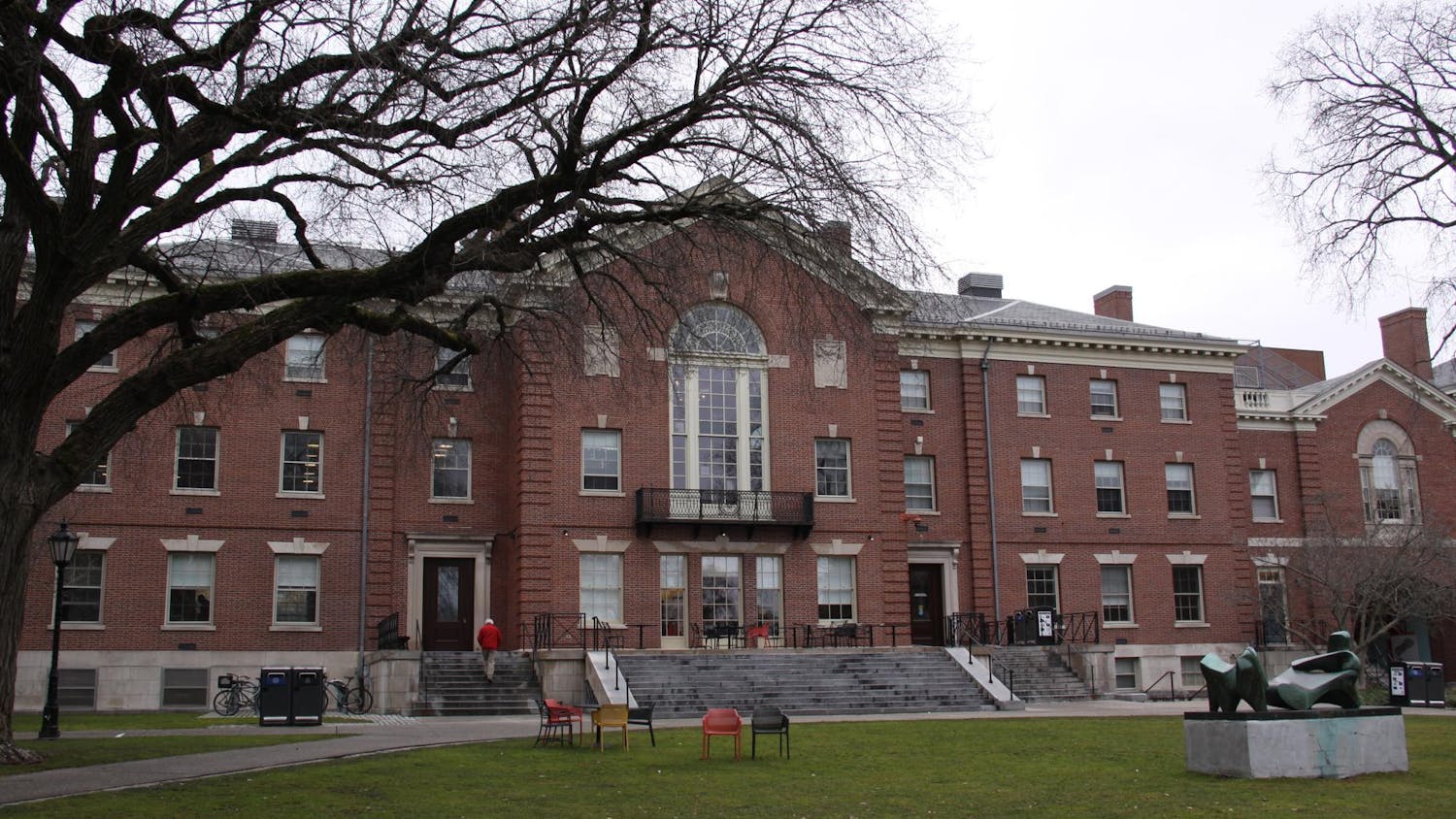In the first lecture hosted by the Center for the Study of Slavery and Justice, Marcus Rediker, a professor of Atlantic history at the University of Pittsburgh, emphasized the importance of a “history from below” when looking at the Amistad Rebellion in particular and in the study of history as a discipline.
Rediker’s talk focused on the important findings and methodological approaches of his book “The Amistad Rebellion: An Atlantic Odyssey of Slavery and Freedom.”
Addressing an audience of about 100 people, he said the project was spurred by a lack of scholarship from the African rebels’ perspective. The project’s guiding question, he said, was “How do we get at the African side of the story?”
The history of the Amistad Rebellion, both in historical investigations and in Steven Spielberg’s film “Amistad,” has been too focused on the legal battles that took place in the United States and the speeches given by John Quincy Adams before the Supreme Court, Rediker said.
“The drama of what happened on the deck of the Amistad had really been pushed aside,” Rediker said. “I feel like it was, in fact, marginalized.”
Anthony Bogues, director of the center and professor of Africana studies, told The Herald that Rediker’s talk was “the signature event” for the center this year.
Introducing the event, Bogues said Rediker possesses “the art of storytelling” and has a unique ability to “give voice and speech to the slaves.”
The key to understanding the African origins of any part of American history is an engagement with West African cultures, Rediker said.
Rediker said he aimed to “discover whether there is a specifically West African or Sierra Leonean or, more specifically, Mendean cultural logic” to the Amistad Rebellion.
Rediker shared a few of what he called his most crucial findings, one of which was a proposed explanation for why this revolt succeeded when so many others aboard slave ships failed. Though there were at least 10 different ethnic groups aboard the ship, two-thirds of the Africans on the Amistad were Mende, the dominant economic group in Sierra Leone, he said.
Because their language was the language of trade, people from other ethnic groups knew the Mende language, so they were all able to communicate.
All Mende men had to be trained as warriors in Sierra Leone, so most of the men aboard the ship had fighting experience, Rediker said.
It was perhaps most important that all of the men had been initiated into the Poro Society back in Sierra Leone, Rediker said. A key function of the Poro Society was that it held responsibility for deliberating and declaring war — a practice that helped organize the Africans on the ship when they had to decide whether to revolt, he said.
Rediker said an oral history he discovered contained a description of the debate that occurred in the hold of the Amistad. In describing the debate, the Africans said, “As soon as the debate was over, we had one word — and that word was war.”
“They were doing what the Poro Society always did — they declared war,” Rediker said.
While many scholars doubted Rediker’s ability to find sources displaying the Africans’ perspective, the oral history is just one example of the wealth of such sources he said he uncovered.
In offering the “history from below,” Rediker said he ultimately hopes to reshape and enhance society’s understanding of the “history from above.”
“The most encouraging thing about history from below: It can arise at any moment and have dramatic and powerful effects,” he said.
ADVERTISEMENT




